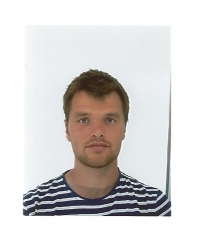SECONDMENT
STUDY THE FUNDAMENTAL PROPERTIES OF HEAVY METAL OXIDE (HMO) GLASSES
FROM : UNIVERSITÉ DE BORDEAUX (FRANCE)TO : UNIVERSITÉ LAVAL (QUÉBEC)
FROM : 24 APRIL 2022 TO : 25 MAY 2022
Involved Work Packages :
![]()
![]()
![]()
RESEARCHER
OBJECTIVES
The main objective of this secondment is to study the fundamental properties of Heavy Metal Oxide (HMO) glasses for the development of core – cladd low loss Mid-InfraRed (MIR) transparent optical fibers. The selected glass compositions will be moslty made with relatively low phonon energy precursors such as gallium and germanium oxides (Ga2O3, GeO2). Since a few years, we put efforts on the implementation of purification processes for reducing optical losses in the glass fiber. Recently, we demonstrated the capability to manufacture doped-glass preforms with an extremely low OH hydroxyl content (< 10 ppm) in the glass matrix while adding reactive agent (fluorides) during the glass synthesis. We have also shown the capability to extend those preform using the traditional preform-to-fiber technique.
Therefore, the objectives in designing such optical guide geometries now consists in determinying the most appropriate core – cladd glass compositions. Then the study of the rheological and thermal properties such as the thermal expansion coefficient and the glass viscosity is now a requirement in order to provide the manufacture of the low loss core – cladd optical fibers. Thus, the examination of the impact of the addition of the reactive agent onto those properties will be investigated in a first place. Then, the design and the manufacture of the core-cladding preform will be explored. Finally, the capability to extend the core – cladd compositions will be explored. Besides, the selected low OH content doped-core glass composition will be the subject of laser / matter interaction. Indeed, the spectroscopic properties (luminescence and lifetime measurements) in the InfraRed domain will be investigated as well as the capability to write optical components using the Direct Laser Writing (DLW) process will be also examined.
TASKS
– Glass and preform synthesis
– Thermal characteristic properties
– Rheological properties (viscosity, thermal expansion)
– Spectroscopic properties (lifetime, luminescence)
– Extended optical fibers using the classical preform-to-fiber approach
– Optical losses in the glass fibers
– Direct Laser Writing (DLW) in a selected low OH glass compositions
